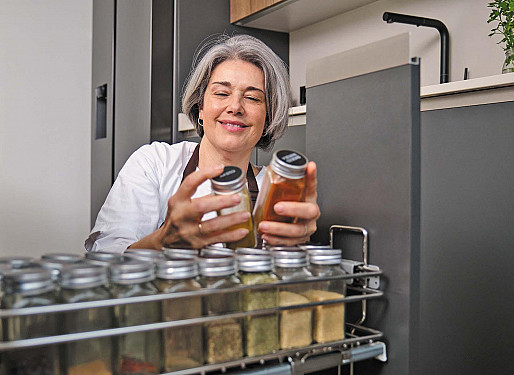New thinking on daily food goals
Stop aiming for a particular amount of servings in each food category and focus on total daily intake.

Trying to hit the mark on a healthy diet can be challenging. You need to eat enough of the right foods to meet your body's vitamin and mineral needs.
Experts have tried to guide us over the years by recommending goals of daily food servings — such as five to eight servings of fruits and vegetables per day. But your idea of serving sizes may differ from someone else's. That's led to confusion and, now, change.
Daily food goals
Dietary guidelines have shifted away from daily food goals measured in servings. Instead, they now focus on daily food totals that are measured in cups, ounces, or tablespoons.
The daily goals depend on your health, sex, and age. For example, for moderately active adults ages 66 or older, men are advised to eat 2,200 calories per day; women are advised to eat 1,800 calories per day.
Here are the daily food goals for those diets.
Vegetables: 2.5 to 3 cups. "Aim for a variety of vegetables and try to include those with different colors, for different phytonutrients [beneficial substances in plants]," suggests registered dietitian Kathy McManus, director of the Department of Nutrition at Harvard-affiliated Brigham and Women's Hospital.
Go for dark, leafy greens like spinach or kale; vibrant yellow squash; or bright red tomatoes or peppers. Legumes — such as peas or beans — are included in the goal for this food category.
Fruits: 1.5 to 2 cups. Options include berries, peaches, cherries, kiwi, or other fruits.
Whole grains: about half a cup. "The word 'whole' should be the first ingredient listed when you're choosing breads, crackers, and cereals," McManus says.
Poultry, fish, or meat: 5 to 6 ounces. "That's up to 42 ounces per week. Try to make 12 of those ounces seafood," McManus advises.
Dairy, such as milk or yogurt: 3 cups. "But the Harvard School of Public Health disagrees. Research shows that one to two servings [one to two cups of milk or yogurt] is sufficient to achieve good health," says Teresa Fung, adjunct professor in the Department of Nutrition at the Harvard T.H. Chan School of Public Health.
Healthy oils: 1 to 2 tablespoons. Choose oils such as olive, peanut, canola, or avocado.
Measuring made simpleYou don't always have to use measuring cups and spoons to track how much food you're eating. Use everyday objects to gauge amounts. For example:
|
Making it work
You may think it's going to be hard to eat all those cups of food each day. "It actually is not, when you spread it throughout the day and include fruits and vegetables whenever you eat," Fung says.
Keep track of your food goals by using measuring cups or just eyeballing amounts (see "Measuring made simple"). Or simply follow Harvard's Healthy Eating Plate, which helps you meet daily goals with healthy, balanced meals. Fill half your plate with fruits and vegetables, one-quarter with whole grains, and one-quarter with protein such as fish, chicken, beans, or nuts.
Make it an interesting mix. Sprinkle beans, nuts, and seeds in salads; add sautéed vegetables such as zucchini or tomatoes to an omelet; make a smoothie with berries, seeds, and bananas. It's a fun and easy way to build toward your daily goals, and the reward is good health.
Disclaimer:
As a service to our readers, Harvard Health Publishing provides access to our library of archived content. Please note the date of last review or update on all articles.
No content on this site, regardless of date, should ever be used as a substitute for direct medical advice from your doctor or other qualified clinician.















